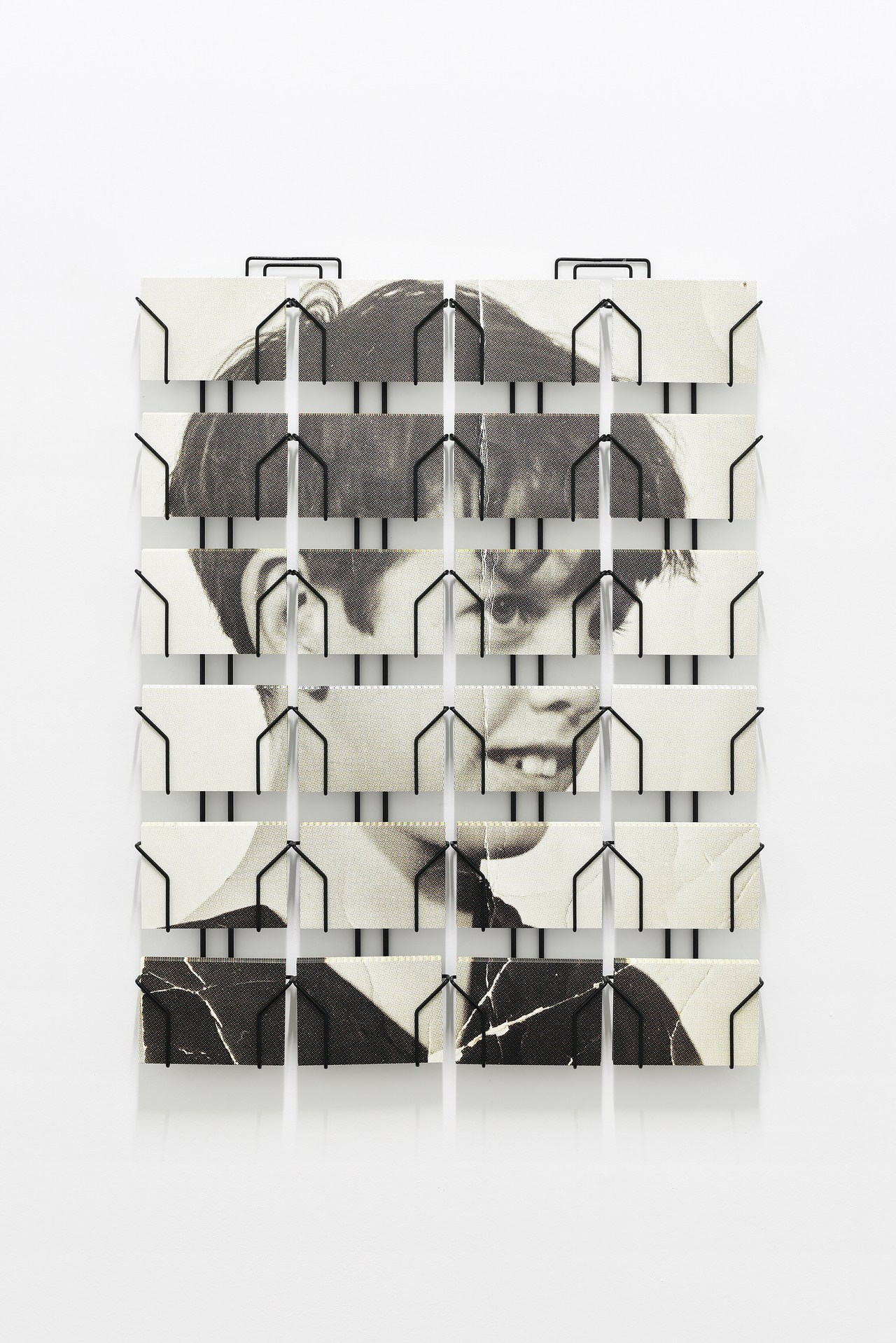
© » KADIST
Oded Hirsch
Oded Hirsch’s video work Nothing New (2012) utilizes seemingly absurdist tropes to raise more trenchant questions about communal action and collective identity in modern day Israel. In the video, a fallen parachutist hangs tangled by his own lines, suspended between two electrical towers in a surreally desolate landscape of overgrown fields in the Jordan Valley of Israel. A group of over a hundred men and women approach the towers, working with almost mechanic efficiency to free the parachutist from the power lines overhead.

© » KADIST
Shilpa Gupta
Drawing & Print (Drawing & Print)
These hand drawn maps are part of an ongoing series begun in 2008 in which Gupta asks ordinary people to sketch outlines of their home countries by memory. Gupta created each map by superimposing 100 separate drawings of each country. The project investigates modern notions of the nation-state, national identity, and borders by looking at countries in which boundaries are contested and the history of the land far precedes such ideas.

© » KADIST
Nicolás Consuegra
A residency program in the blazing hot city of Honda, Colombia, inspired artist Nicolás Consuegra to consider the difficulty in understanding the needs of a distant community. An important town during the colonial era as the main port on the Magdalena River, Honda is presently rife with poverty, unemployment, and environmental deterioration. Here he produced the work Nadie sabe de la sed con que otro bebe (No one knows the thirst with which another drinks) , a variable arrangement of cut glasses in front of a mirror so that they appear whole.

© » KADIST
Clare Rojas
Rojas’s two pieces in the Kadist Collection— Untitled (four-legged…) and Untitled (Bird’s Eyes) —are representative of her pictorial style which uses bold colorful blocks of paint and female and animal characters. While Untitled (Bird’s Eyes) does not depict any actual women, it nevertheless alludes to gender roles and the power of the female gaze. Apparently playful, this scene of two animals has an ominous quality: A bird and a hedgehog confront at each other and the bird appears to be poking, even eating the hedgehog’s eye.

© » KADIST
Hamra Abbas
At first glance, Cityscapes (2010) seems to be a collection of panoramic photographs of the city of Istanbul—the kind that are found on postcards in souvenir shops. A closer examination, however, reveals that a key element—the minaret—has been systematically removed, thereby changing profoundly the history and religious character of the city. The work is a response to a November 2009 referendum in Switzerland that approved a ban on the construction of new minarets in that country.

© » KADIST
Walead Beshty
Constructed out of metal or glass to mirror the size of FedEx shipping boxes, and to fit securely inside, Walead Beshty’s FedEx works are then shipped, accruing cracks, chips, scrapes, and bruises along the way to their destination. Displayed with the cardboard boxes (and their shipping labels, which chart the journey in a different way) that contain them during the journey, these damaged forms draw from minimalist sculpture, and conceptual artworks that focused on distance, travel, and virtual connections.

© » KADIST
Ryan Gander
Epiphany…learnt through hardship is composed of a bronze sculpture depicting the model of the little dancer of Degas, in the pose of a female nude photographed by Edward Weston (Nude, 1936) accompanied by a blue cube. The work refers to the positive occupations of space and the absence of form and structure, to the relationship between the visible and the invisible, to memory, and to the relationship we have to images and to our history. The work refers to childhood, biography and learning to question how meaning is made and how history is remembered and performed.

© » KADIST
Hank Willis Thomas
South Africa Righteous Space by Hank Willis Thomas is concerned with history and identity, with the way race and ‘blackness’ has not only been informed but deliberately shaped and constructed by various forces – first through colonialism and slavery, and more recently through mass media and advertising – and reminds us of the financial and economic stakes that have always been involved in representations of race.
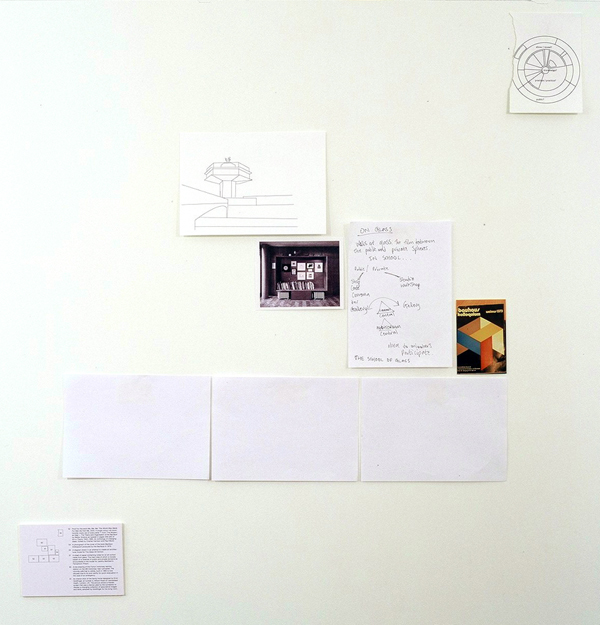
© » KADIST
Ryan Gander
You see without light is a group of photographs around the theme of Bauhaus. This includes a reference to one of Gander’s works which is the Bauhaus manifesto without dots on the letter ‘i’, as well as drawings of his ideal art school.

© » KADIST
Ho Tzu Nyen
The Cloud of Unknowing (2011) is titled after a 14th-century medieval treatise on faith, in which “the cloud of unknowing” that stands between the aspirant and God can only be evoked by the senses, rather than the rational mind. In the video, eight protagonists act out their daily lives. The setting is a soon-to-be-demolished public housing facility in Singapore, a country in transition from a mindset of Eastern collectivism to global neoliberalism.

© » KADIST
Tino Sehgal
Tino Sehgal’s This Exhibition requires an interpreter (in this particular piece, a gallery attendant) to faux faint each and every time a visitor enters into a given space. Upon hitting the cold, hard gallery floor, the seemingly confused interpreter writhes slowly on the ground while reciting a few lines from the curatorial statement in a whispered moan.

© » KADIST
Shilpa Gupta
The three monkeys in Don’t See, Don’t Hear, Don’t Speak are a recurring motif in Gupta’s work and refer to the Japanese pictorial maxim of the “three wise monkeys” in which Mizaru covers his eyes to “see no evil,” Kikazaru covers his ears to “hear no evil,” and Iwazaru covers his mouth to “speak no evil.” For the various performative and photographic works that continue this investigation and critique of the political environment, Gupta stages children and adults holding their own or each other’s eyes, mouths and ears. These images suggest that seemingly mobilized societies can actually produce more fear and myths, and that no real freedom is ensured. Instead of facilitating the free circulation of ideas, “advanced” political and technological systems often generate more cultural clichés, wars, and terror.

© » KADIST
Nicolás Consuegra
In his project Instituto de Vision (2008), Consuegra investigates how modernism gave rise to many new technological forms of vision, most notably the camera, yet also resulted in the disappearance of outmoded forms of vision. As a metaphor for this process, he looks to the afterlife of the image as evidenced in signs. When a company goes out of business or moves, their sign often lingers and slowly fades creating a ghosted image of their sojourn.

© » KADIST
Hank Willis Thomas
Drawing & Print (Drawing & Print)
Shot in black and white and printed on a glittery carborundum surface, Black Hands, White Cotton both confronts and abstracts the subject of its title. As with many of his works, the artist has taken a found image and manipulated it to draw out and dramatize the formal contrast between the black hands holding white cotton. Cotton, of course is one of the most familiar fabric sources to us, and becomes incredibly soft once processed.

© » KADIST
Karl Haendel
Drawing & Print (Drawing & Print)
Haendel’s series Knights (2011) is a set of impeccably drafted, nine-foot-tall pencil drawings depicting full suits of armor. The series riffs on previous investigations by the artist such as his meticulous depictions of masculine political figures, which included a headless J. Edgar Hoover and a Hitler head floating vulnerably in the center of a white expanse (Hitler’s iconic mustache was crafted from the artist’s pubic hair). Rendered in soft graphite, the imposing Knights embody the ostensibly conflicting ideals of chivalrous deference and invulnerable masculinity.

© » KADIST
Rodrigo Braga
Braga’s video work Provisão (2009) opens with a still shot of a clearing in a forest, shoots of grass emerging from a muddy brown patch of seemingly dry and barren earth. As the camera fades to black, the viewer hears the repeated sound of a shovel striking dirt. The camera fades back to the clearing and zooms in on a shirtless man digging up the ground.

© » KADIST
Clare Rojas
Rojas’s two pieces in the Kadist Collection— Untitled (four-legged…) and Untitled (Bird’s Eyes) —are representative of her pictorial style which uses bold colorful blocks of paint and female and animal characters. While Untitled (Bird’s Eyes) does not depict any actual women, it nevertheless alludes to gender roles and the power of the female gaze. Apparently playful, this scene of two animals has an ominous quality: A bird and a hedgehog confront at each other and the bird appears to be poking, even eating the hedgehog’s eye.
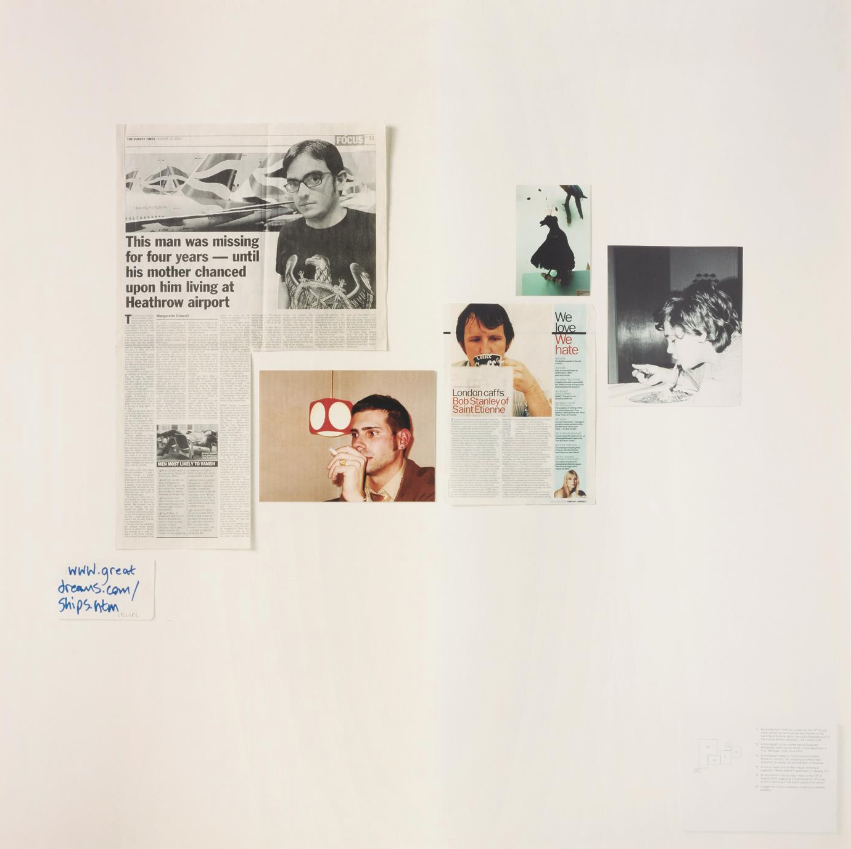
© » KADIST
Ryan Gander
Ryan Gander is a collector. He keeps all sorts of documents to create from. His studio is full of found images, personal images, documents copied from internet or cutout of newspapers.
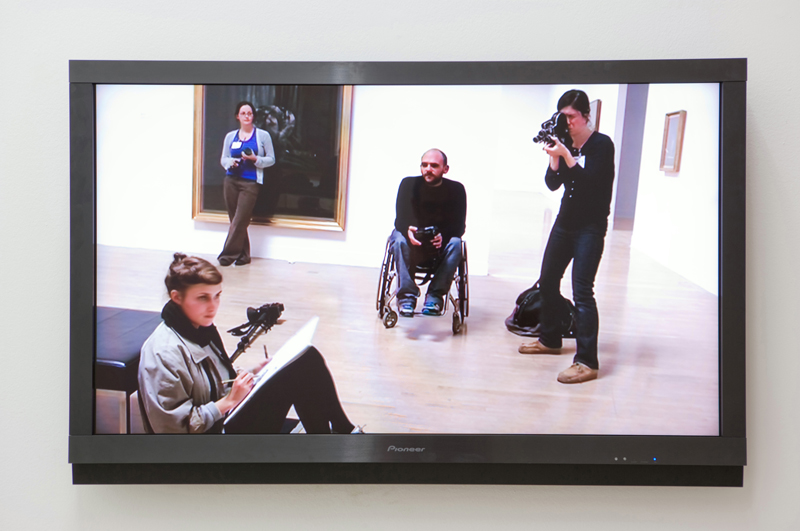
© » KADIST
Ryan Gander
The work consists of a work inside a work. The spectator is presented with a commissioned documentary on a flat-screen Tv on the subject of the production of the making of an artwork that doesn’t exist entitled The magic and the meaning (2008). The imaginary film, The magic and the meaning , is described only within the documentary, which follows parts of the making of the film, extracts from interviews with the writer and film maker Dan Fox and the artist and maker of the work Ryan Gander; as well as showing short slow-motion sections of the film that does not exist.
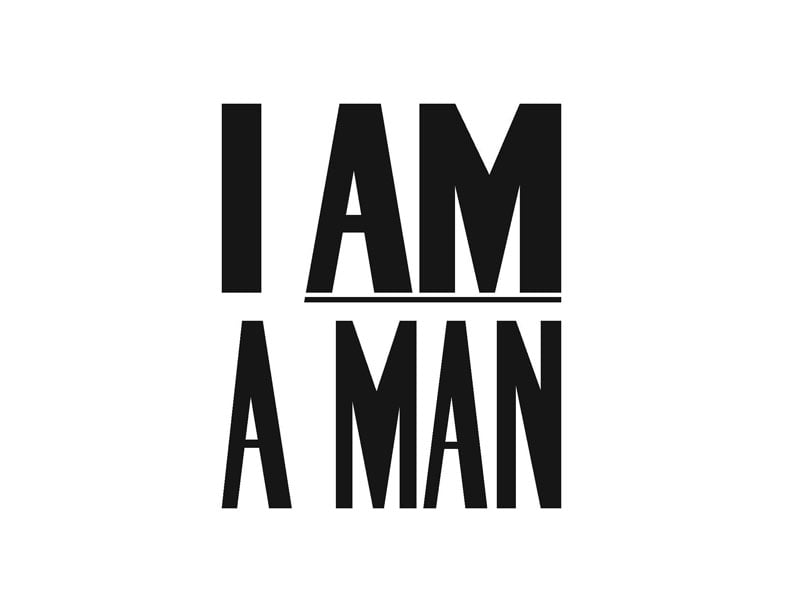
© » KADIST
Hank Willis Thomas
The image is borrowed from protests during Civil Rights where African Americans in the south would carry signs with the same message to assert their rights against segregation and racism. Historically, in countries such as the US and South Africa, the term “boy” was used as a pejorative and racist insult towards men of color, slaves in particular, signifying their alleged subservient status as being less than men. In response, Am I Not A Man And A Brother?

© » KADIST
Walead Beshty
Constructed out of metal or glass to mirror the size of FedEx shipping boxes, and to fit securely inside, Walead Beshty’s FedEx works are then shipped, accruing cracks, chips, scrapes, and bruises along the way to their destination. Displayed with the cardboard boxes (and their shipping labels, which chart the journey in a different way) that contain them during the journey, these damaged forms draw from minimalist sculpture, and conceptual artworks that focused on distance, travel, and virtual connections.
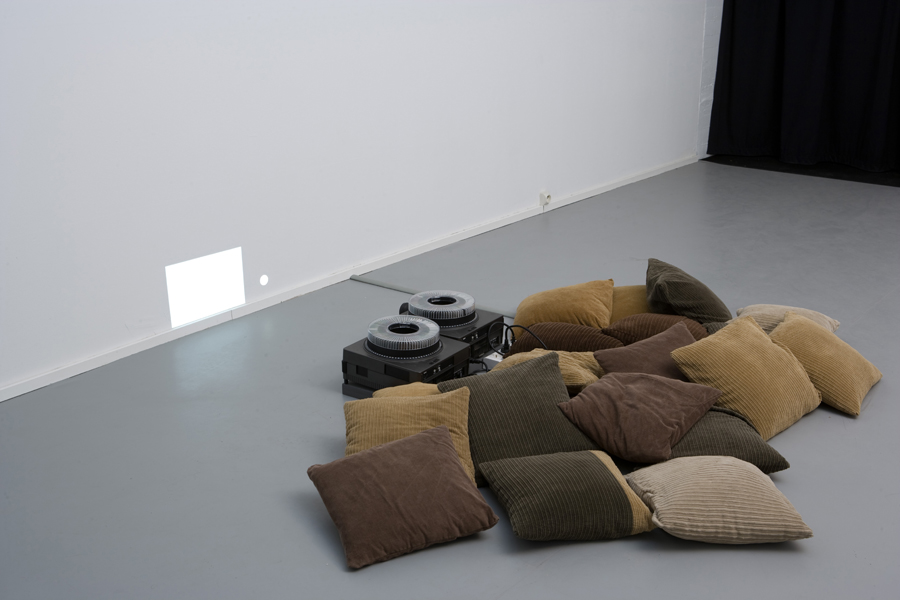
© » KADIST
Ryan Gander
This work is meditative and fragile. These abstract forms are projected slides belonging to another lecture, Travelogue , where the images have been removed. What is left is the hole of the frame of the slide that light draws upon and projects on the wall.

© » KADIST
Hank Willis Thomas
Drawing & Print (Drawing & Print)
Intentionally Left Blanc alludes to the technical process of its own (non)production; a procedure known as retro-reflective screen printing in which the image is only fully brought to life through its exposure to flash lighting. Using a found photograph depicting a passionate crowd of African Americans—their attitude suggesting the fervor of a civil-rights era audience— Intentionally Left Blanc reverts in its exposed, “positive” format to an image in which select faces are whitened out and erased, the exact inverse of the same view in its “negative” condition. This dialectic of light and dark re-emerges when we view the same faces again, only this time black and featureless, a scattering of disembodied heads amidst a sea of white.

© » KADIST
Shilpa Gupta
In Untitled (Sword) , addressing histories of colonialism with abstraction, a large steel blade extends from the gallery wall. Its severed tip dangles from the end of the blade by a string, floating just above the gallery floor.
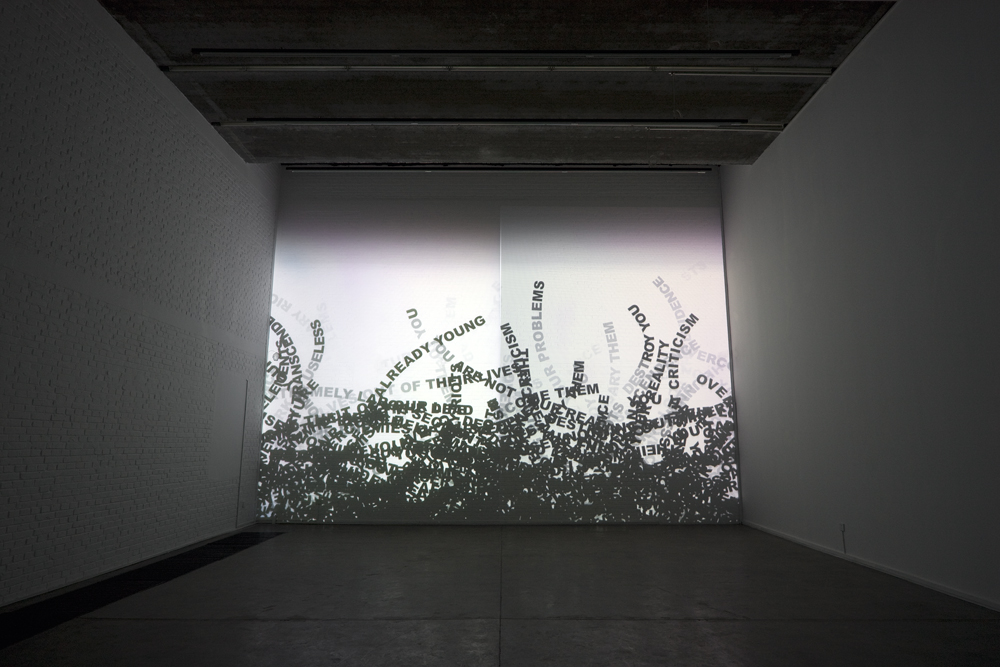
© » KADIST
Tsang Kin-Wah
The Third Seal—They Are Already Old. They Don’t Need To Exist Anymore is part of The Seven Seals , Tsang’s ongoing series of digital videos that are projected as installations onto the walls and ceilings of dark rooms. Using texts and computer technology, the series draws its reference from various sources—the Bible, Judeo-Christian eschatology, existentialism, metaphysics, politics, among others—to articulate the world’s complexity and the dilemmas that people face while approaching “the end of the world.” The Third Seal is a nineteen-by-twenty-seven-foot projection on a single wall that, together with sound, creates an immersive and dynamic environment.

© » KADIST
Walead Beshty
Black Curl (CMY/Five Magnet: Irvine, California, March 25, 2010, Fujicolor Cyrstal Archive Super Type C, EM No 165-021, 05910) is a visually compelling photogram. Bold shapes, and the breaks between them, create a rhythm and compose an engaging abstract image. At the same time, the work deals with the conditions of the photograph’s manufacture.

© » KADIST
Nicolás Consuegra
Consuegra’s Colombia is a mirror made in the shape of the artist’s home country—a silhouette that has an important resonance for the artist. Consuegra’s mirrored Colombia is similar to an earlier version, made to be show opposite a mirror of the United States. Whether reflecting his two homes within one another (Consuegra studied in the US and has made several works about this experience of living in exile from his homeland), or simply reflecting its surroundings, Colombia is a simple yet evocative work about the identity of a nation, and the things that we project—really and metaphorically—onto its form.

© » KADIST
Hank Willis Thomas
Bread and Roses takes its name from a phrase famously used on picket signs and immortalized by the poet James Oppenheim in 1911. “Bread for all, and Roses, too’—a slogan of the women in the West,” is Oppenheim’s opening line, alluding to the workers’ goal for wages and conditions that would allow them to do more than simply survive. Thomas’ painting includes several black, white, brown, yellow, and red raised fists—clenched and high in the air in the internationally recognized symbol of solidarity, resistance, and unity.

© » KADIST
Shilpa Gupta
Drawing & Print (Drawing & Print)
These hand drawn maps are part of an ongoing series begun in 2008 in which Gupta asks ordinary people to sketch outlines of their home countries by memory. Gupta created each map by superimposing 100 separate drawings of each country. The project investigates modern notions of the nation-state, national identity, and borders by looking at countries in which boundaries are contested and the history of the land far precedes such ideas.
Hank Willis Thomas
- location: New York, New York
- year born: 1976
- gender: male
- nationality: American
- home town: Plainfield, New Jersey
Ryan Gander
- location: Chester, United Kingdom
- year born: 1976
- gender: male
- nationality: British
Walead Beshty
- location: Los Angeles, California
- year born: 1976
- gender: male
- home town: London, United Kingdom
Shilpa Gupta
- location: Mumbai, India
- year born: 1976
- gender: female
- nationality: Indian
- home town: Mumbai, India
Clare Rojas
- location: San Francisco, California
- year born: 1976
- gender: female
- nationality: American
- home town: Columbus, Ohio
Karl Haendel
- location: Los Angeles, California
- year born: 1976
- gender: male
- nationality: American
- home town: New York, New York
Ho Tzu Nyen
- location: Singapore
- year born: 1976
- gender: male
- nationality: Singaporean
- home town: Singapore
Tsang Kin-Wah
- location: Hong Kong, China
- year born: 1976
- gender: male
- nationality: Chinese
- home town: Shantou, Guangdong Province, China
Oded Hirsch
- location: New York, New York
- year born: 1976
- gender: male
- nationality: Israeli
- home town: Kibbutz Afikim, Israel
Tino Sehgal
- location: Berlin, Germany
- year born: 1976
- gender: male
- nationality: British-German
- home town: London, United Kingdom
-
2000-2009
Tino Sehgal
2004Tino Sehgal’s This Exhibition requires an interpreter (in this particular piece, a gallery attendant) to faux faint each and every time a visitor enters into a given space...
Clare Rojas
2006Rojas’s two pieces in the Kadist Collection— Untitled (four-legged…) and Untitled (Bird’s Eyes) —are representative of her pictorial style which uses bold colorful blocks of paint and female and animal characters...
Shilpa Gupta
2008The three monkeys in Don’t See, Don’t Hear, Don’t Speak are a recurring motif in Gupta’s work and refer to the Japanese pictorial maxim of the “three wise monkeys” in which Mizaru covers his eyes to “see no evil,” Kikazaru covers his ears to “hear no evil,” and Iwazaru covers his mouth to “speak no evil.” For the various performative and photographic works that continue this investigation and critique of the political environment, Gupta stages children and adults holding their own or each other’s eyes, mouths and ears...
Nicolás Consuegra
2008In his project Instituto de Vision (2008), Consuegra investigates how modernism gave rise to many new technological forms of vision, most notably the camera, yet also resulted in the disappearance of outmoded forms of vision...
Clare Rojas
2008Rojas’s two pieces in the Kadist Collection— Untitled (four-legged…) and Untitled (Bird’s Eyes) —are representative of her pictorial style which uses bold colorful blocks of paint and female and animal characters...
Rodrigo Braga
2009Braga’s video work Provisão (2009) opens with a still shot of a clearing in a forest, shoots of grass emerging from a muddy brown patch of seemingly dry and barren earth...
Shilpa Gupta
2009In Untitled (Sword) , addressing histories of colonialism with abstraction, a large steel blade extends from the gallery wall...
-
2010-2019
Hamra Abbas
2010At first glance, Cityscapes (2010) seems to be a collection of panoramic photographs of the city of Istanbul—the kind that are found on postcards in souvenir shops...
Walead Beshty
2010Black Curl (CMY/Five Magnet: Irvine, California, March 25, 2010, Fujicolor Cyrstal Archive Super Type C, EM No 165-021, 05910) is a visually compelling photogram...
Ho Tzu Nyen
2011The Cloud of Unknowing (2011) is titled after a 14th-century medieval treatise on faith, in which “the cloud of unknowing” that stands between the aspirant and God can only be evoked by the senses, rather than the rational mind...
Karl Haendel
Drawing & Print
2011(Drawing & Print) Haendel’s series Knights (2011) is a set of impeccably drafted, nine-foot-tall pencil drawings depicting full suits of armor...
Walead Beshty
2011Constructed out of metal or glass to mirror the size of FedEx shipping boxes, and to fit securely inside, Walead Beshty’s FedEx works are then shipped, accruing cracks, chips, scrapes, and bruises along the way to their destination...
Oded Hirsch
2012Oded Hirsch’s video work Nothing New (2012) utilizes seemingly absurdist tropes to raise more trenchant questions about communal action and collective identity in modern day Israel...
Nicolás Consuegra
2012A residency program in the blazing hot city of Honda, Colombia, inspired artist Nicolás Consuegra to consider the difficulty in understanding the needs of a distant community...
Walead Beshty
2012Constructed out of metal or glass to mirror the size of FedEx shipping boxes, and to fit securely inside, Walead Beshty’s FedEx works are then shipped, accruing cracks, chips, scrapes, and bruises along the way to their destination...
Ryan Gander
2012Epiphany…learnt through hardship is composed of a bronze sculpture depicting the model of the little dancer of Degas, in the pose of a female nude photographed by Edward Weston (Nude, 1936) accompanied by a blue cube...
Hank Willis Thomas
Drawing & Print
2012(Drawing & Print) Intentionally Left Blanc alludes to the technical process of its own (non)production; a procedure known as retro-reflective screen printing in which the image is only fully brought to life through its exposure to flash lighting...
Hank Willis Thomas
2012Bread and Roses takes its name from a phrase famously used on picket signs and immortalized by the poet James Oppenheim in 1911...
Hank Willis Thomas
Drawing & Print
2012(Drawing & Print) Thomas’ lenticular text-based works require viewers to shift positions as they view them in order to fully absorb their content...
Hank Willis Thomas
2012Like many of his other sculptural works, the source of I am the Greatest is actually a historical photograph of an identical button pin from the 1960s...
Hank Willis Thomas
2013The image is borrowed from protests during Civil Rights where African Americans in the south would carry signs with the same message to assert their rights against segregation and racism...
Shilpa Gupta
Drawing & Print
2014(Drawing & Print) These hand drawn maps are part of an ongoing series begun in 2008 in which Gupta asks ordinary people to sketch outlines of their home countries by memory...
Hank Willis Thomas
2014South Africa Righteous Space by Hank Willis Thomas is concerned with history and identity, with the way race and ‘blackness’ has not only been informed but deliberately shaped and constructed by various forces – first through colonialism and slavery, and more recently through mass media and advertising – and reminds us of the financial and economic stakes that have always been involved in representations of race....
Hank Willis Thomas
Drawing & Print
2014(Drawing & Print) Shot in black and white and printed on a glittery carborundum surface, Black Hands, White Cotton both confronts and abstracts the subject of its title...
Nicolás Consuegra
2014Consuegra’s Colombia is a mirror made in the shape of the artist’s home country—a silhouette that has an important resonance for the artist...
Shilpa Gupta
Drawing & Print
2014(Drawing & Print) These hand drawn maps are part of an ongoing series begun in 2008 in which Gupta asks ordinary people to sketch outlines of their home countries by memory...
Walead Beshty
2018Office Work by Walead Beshty consists of a partially deconstructed desktop monitor screen, cleanly speared through its center onto a metal pole...




